- YouTube
- TikTok
OU awarded grants to preserve archives and special collections
Nearly $16,000 in grant funding from the National Endowment for the Humanities is helping OU preserve thousands of photographs, books, newspapers, audio/visual materials, artifacts and more
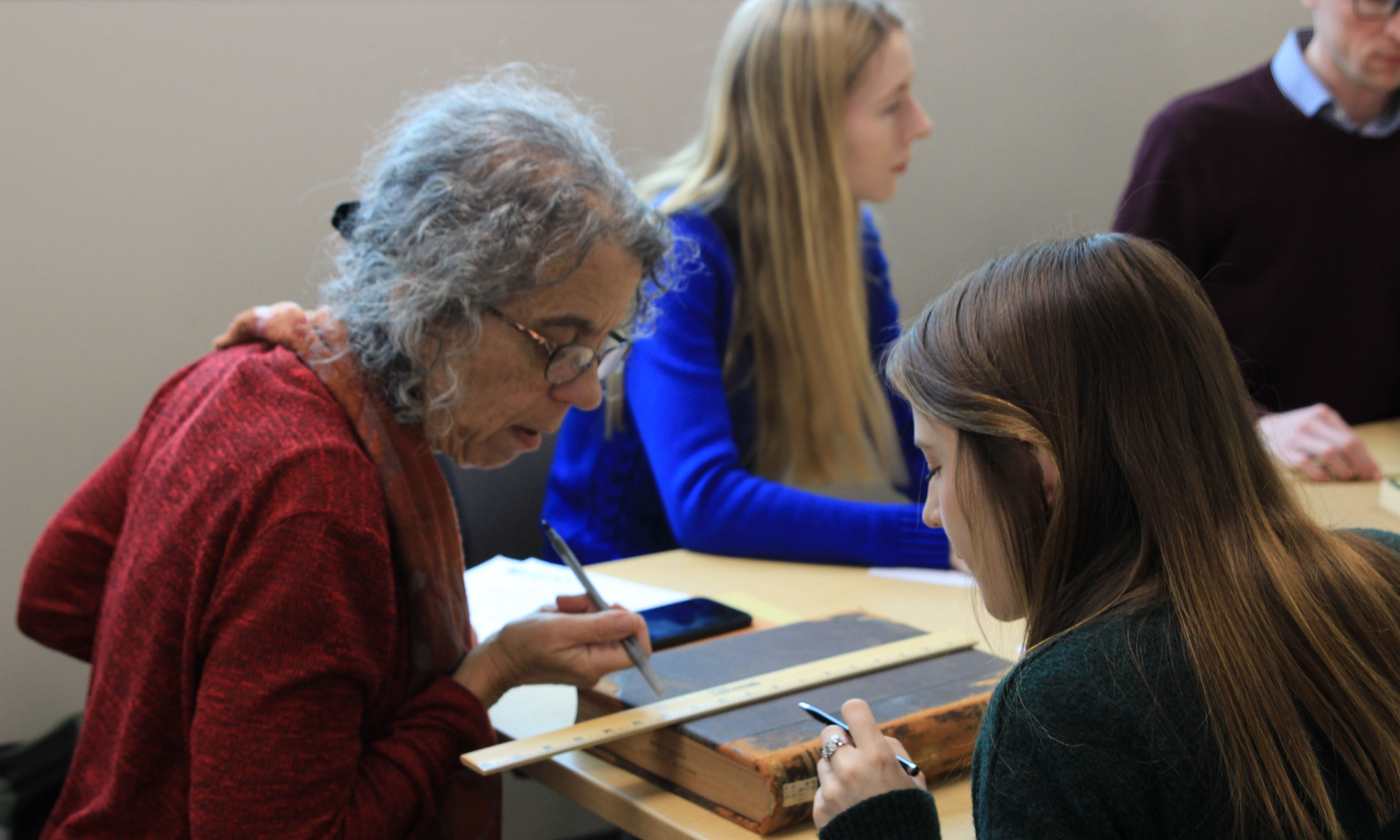
Faculty, staff, and students took part in a book measuring activity during the workshop using samples from circulating collections.
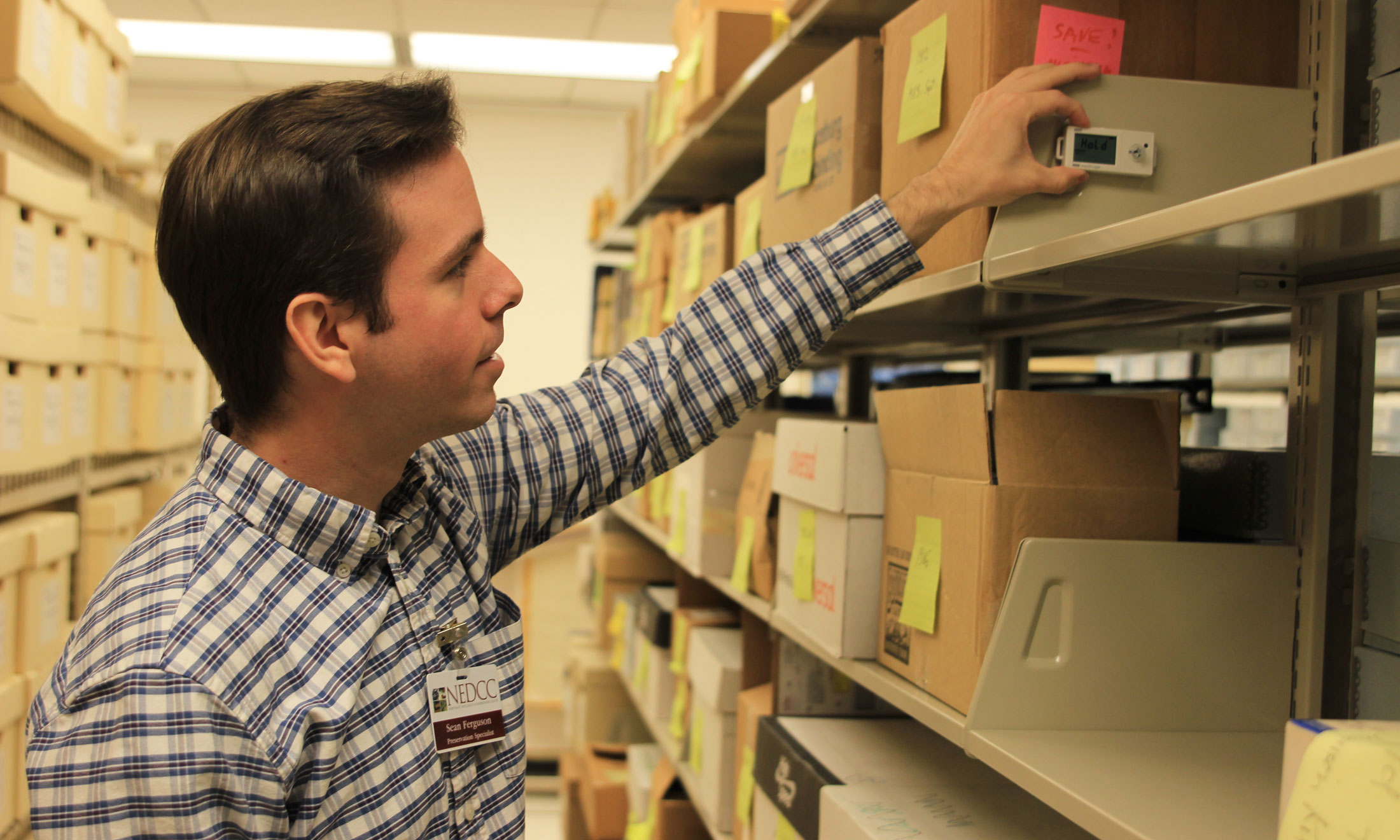
NEDCC Preservation Specialist Sean Ferguson visited campus to help implement an environmental monitoring program in OU Archives and Special Collections.
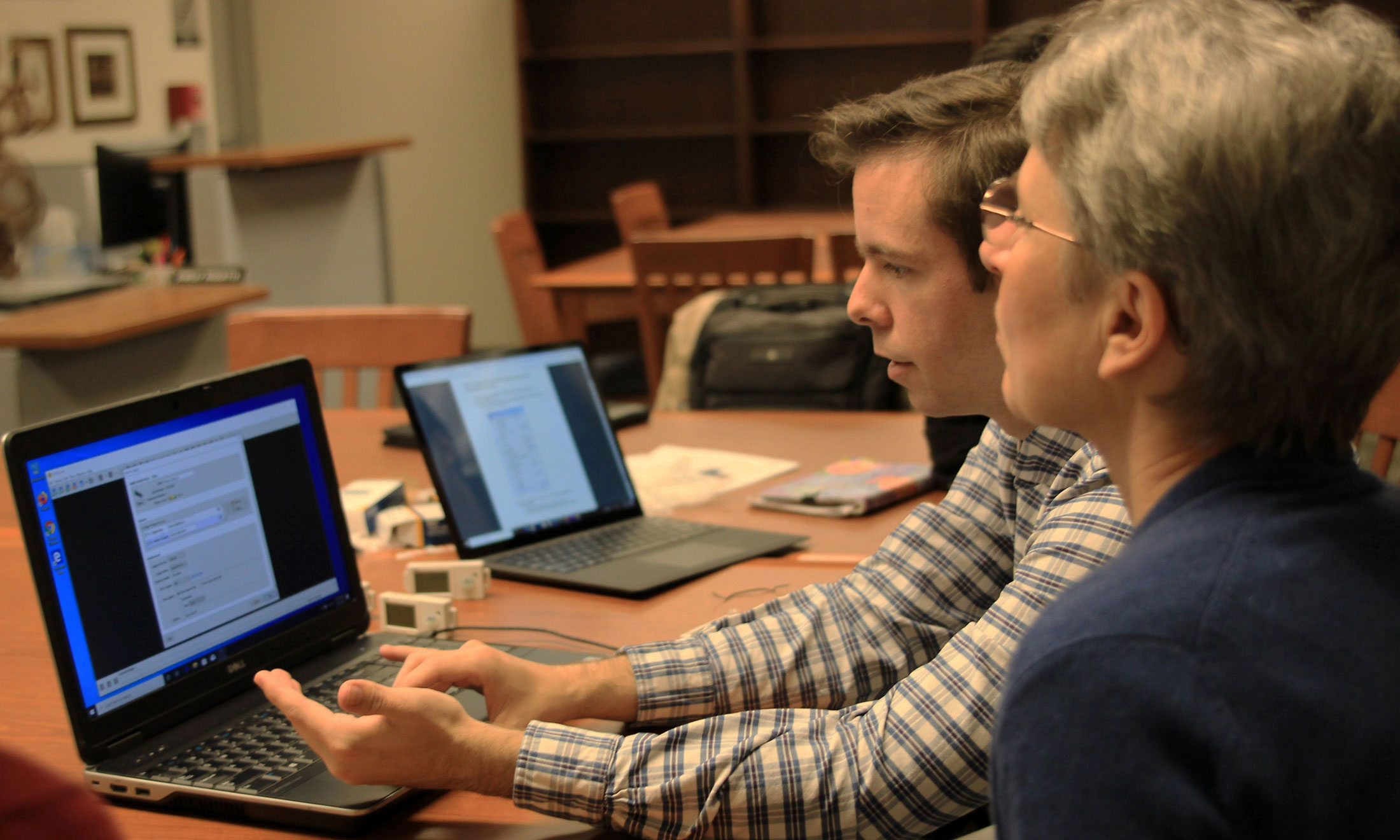
Sean Ferguson and Dominique Daniel, coordinator of OU Archives and Special Collections, launched the data loggers using special software.
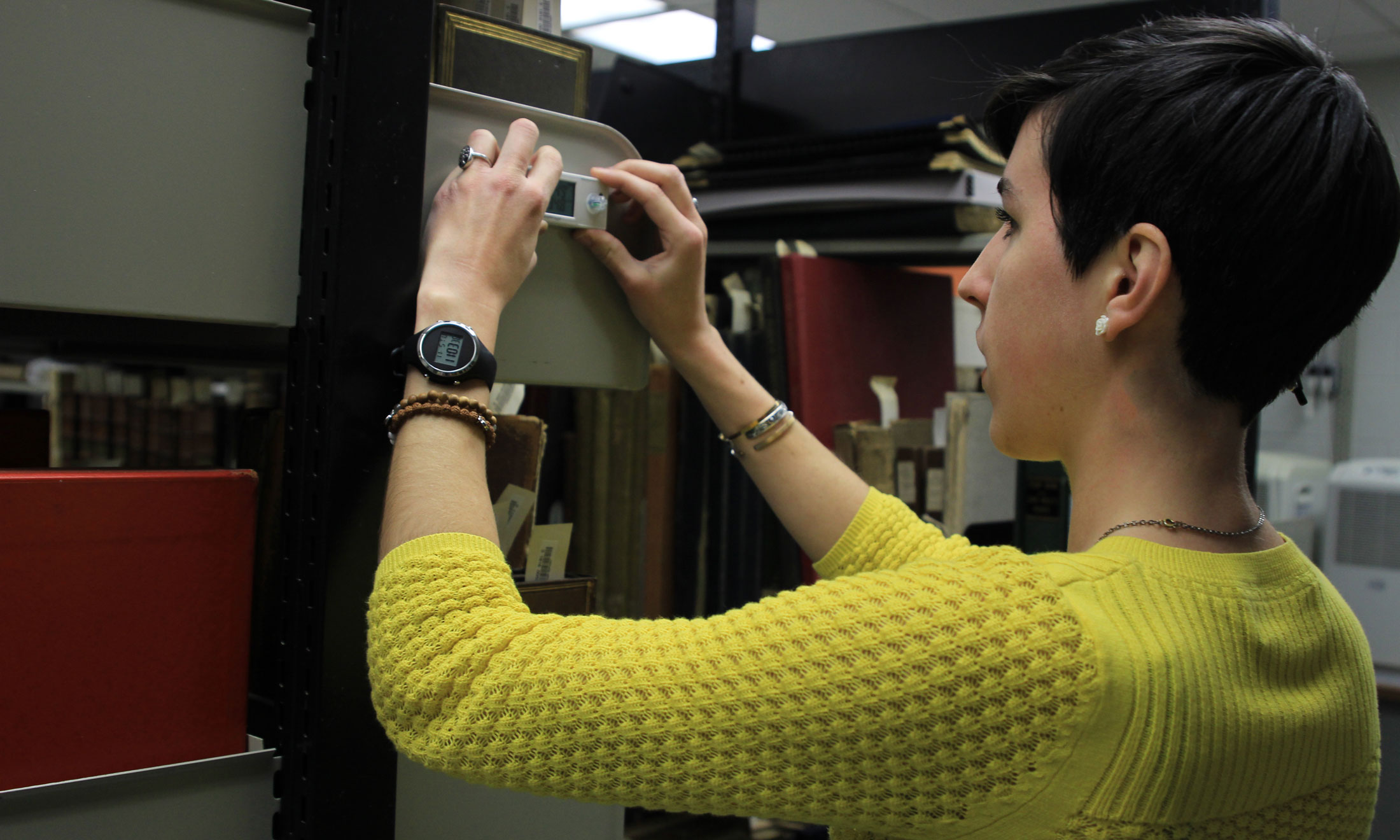
Emily Benoit, OU Archives and Special Collections intern, places a data logger in an archive storage space.
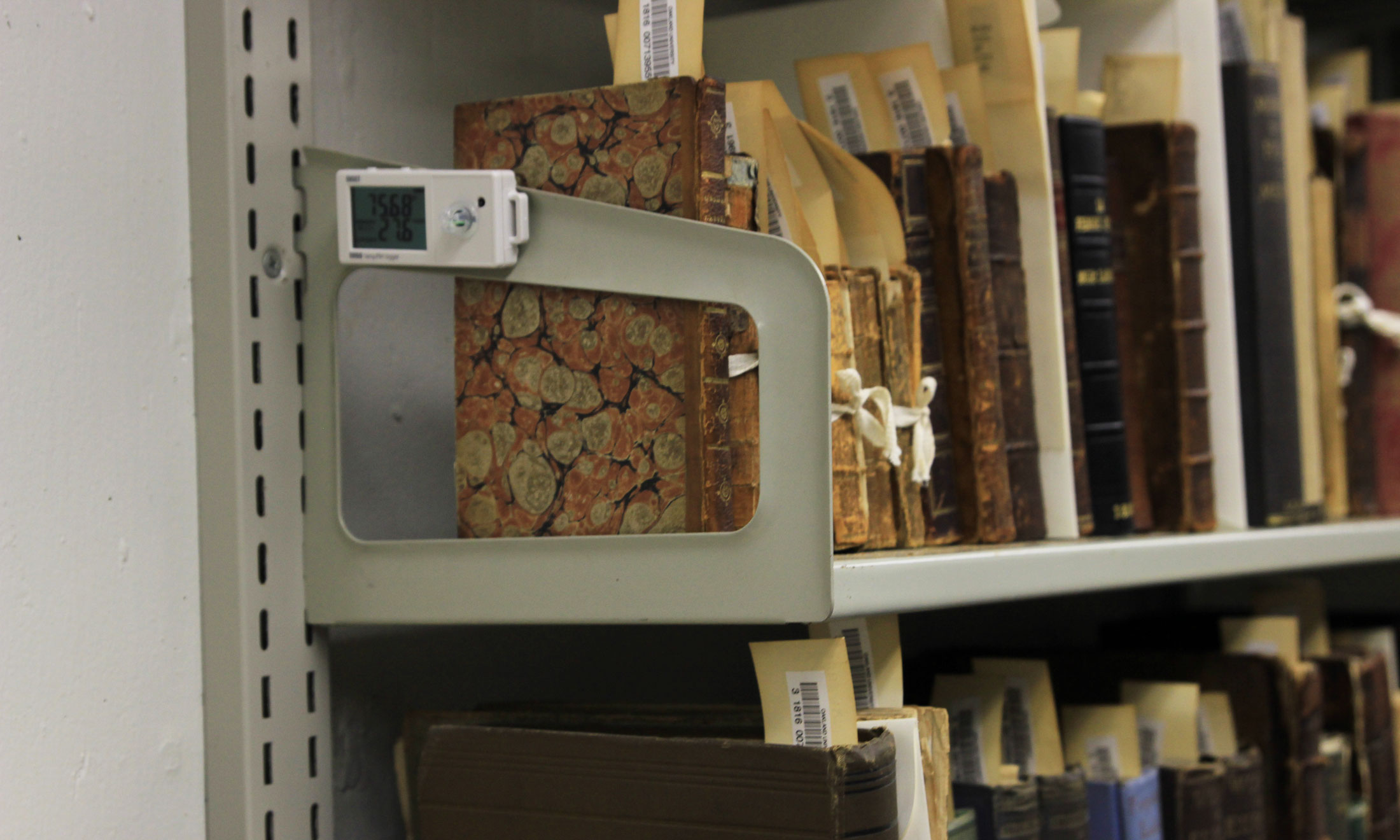
A data logger is shown in OU's rare books collection.
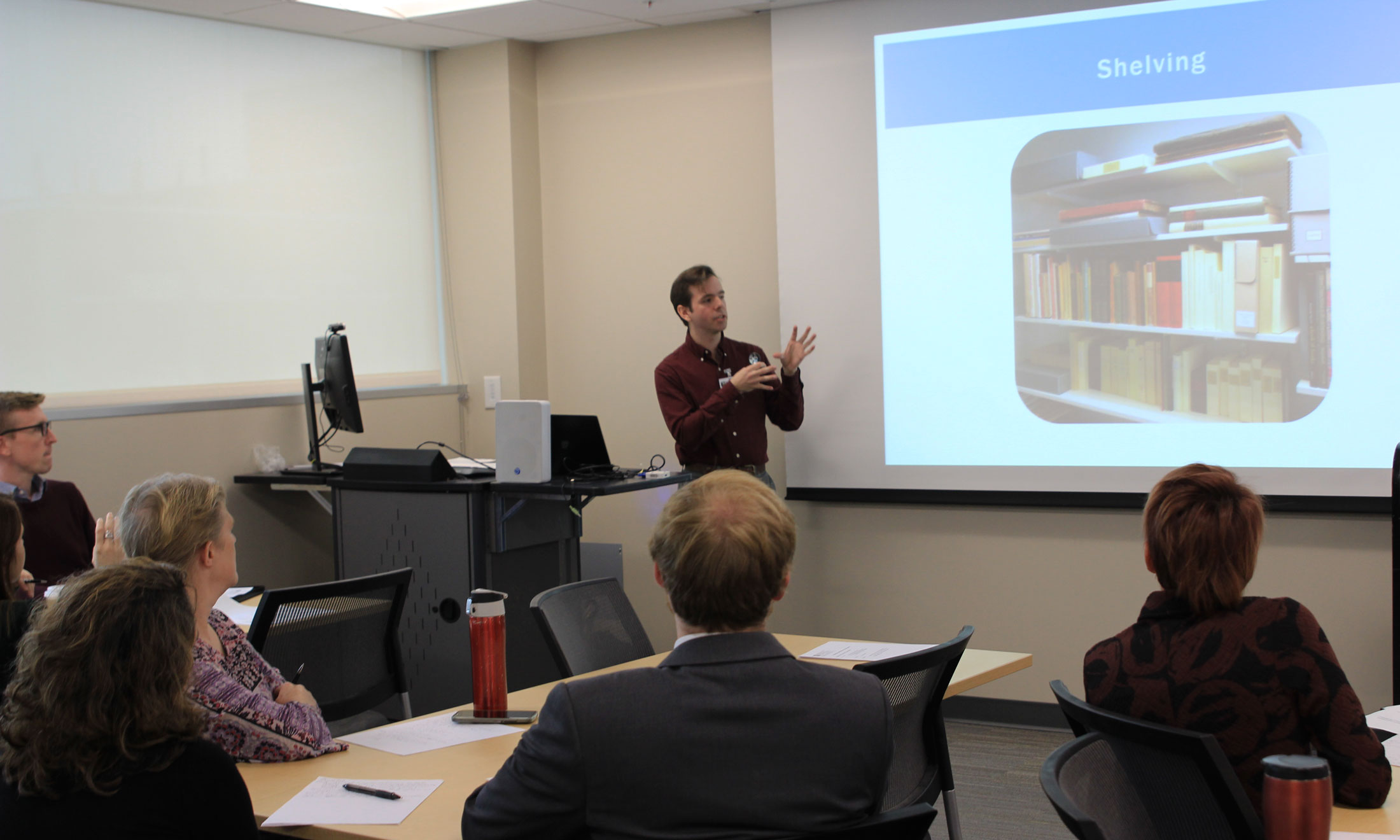
Sean Ferguson led a workshop for faculty and staff highlighting best practices for preserving rare and old books.
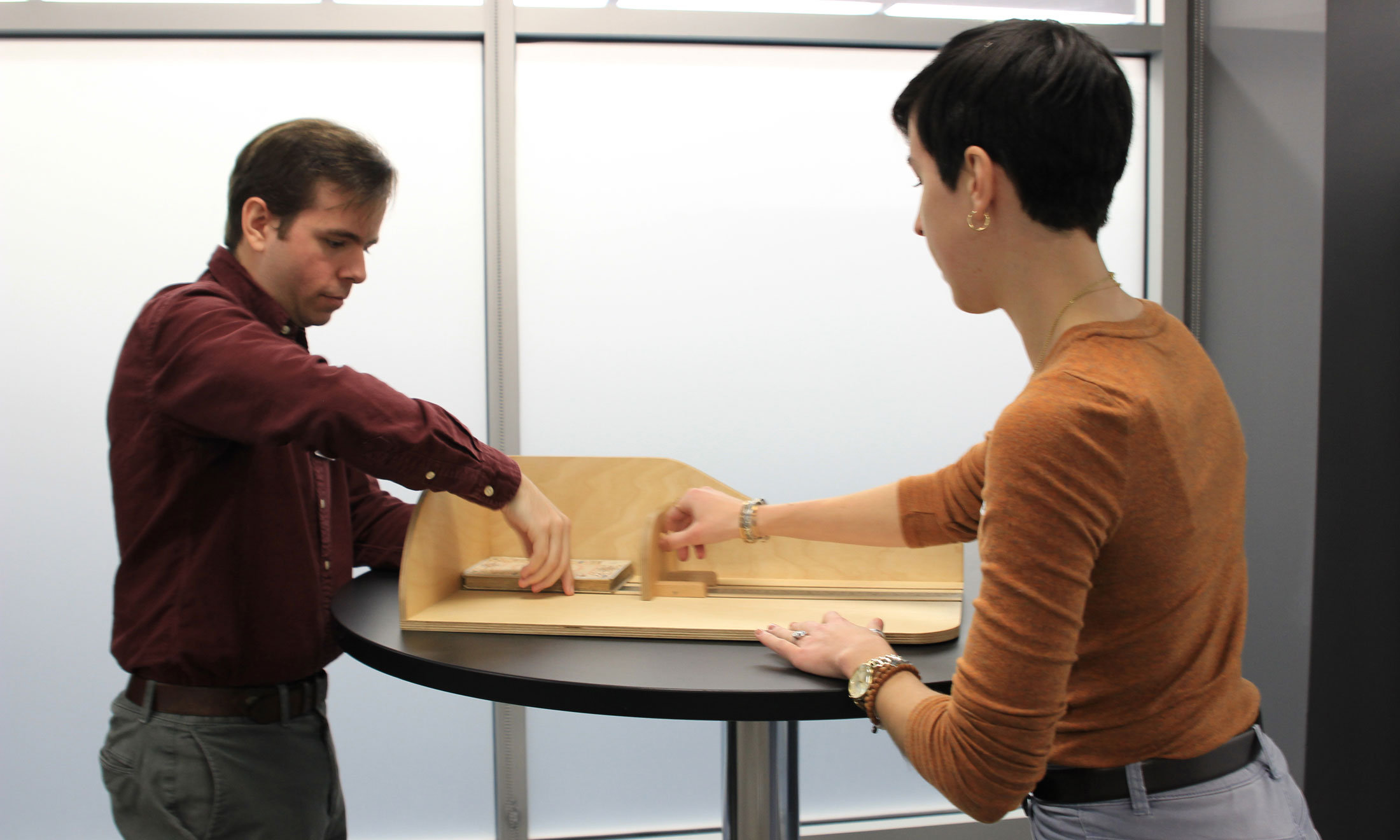
Sean Ferguson and Emily Benoit demonstrated the use of a book measuring device. Measuring a book's dimensions allows archivists to select appropriate storage boxes for optimal preservation.

Faculty, staff, and students took part in a book measuring activity during the workshop using samples from circulating collections.

NEDCC Preservation Specialist Sean Ferguson visited campus to help implement an environmental monitoring program in OU Archives and Special Collections.

The first floor of Kresge Library is home to Oakland University Archives and Special Collections, a vast trove of books, newspapers, photos, microfilms, audio/visual materials and artifacts. Many are centuries old and held exclusively by OU Libraries.
Aside from their value as sources for research and scholarship, these precious materials share one thing in common: they’re all susceptible to environmental factors that can hinder their preservation.
To support the longevity of these items, Oakland University recently received a preservation assistance grant from the National Endowment for the Humanities. The $9,943 award is funding an environmental monitoring program that will help library staff improve preservation of OU Archives and Special Collections.
Until this point, environmental monitoring at OU Libraries had largely been conducted “anecdotally” with basic thermometers and hygrometers, according to Dominique Daniel, coordinator of OU Archives and Special Collections.
“We wanted to raise our environmental monitoring to a level that meets industry standards,” she said. “Especially since we’re in a geographic area where temperatures and relative humidity tend to fluctuate a lot.”
As part of the grant, Sean Ferguson, a preservation specialist at the Northeast Document Conservation Center, visited campus to advise library staff on program implementation and assist with placement of data loggers at strategic locations throughout OU Archives and Special Collections. The devices record data on temperature and relative humidity, two of the most important factors influencing an item’s preservation.
“When temperature and relative humidity are too high in a storage space, it increases the rate at which chemical reactions occur and break down books, papers, anything that would be important to store in archives and special collections.” Ferguson explained.
To monitor storage spaces, the data loggers are placed in close proximity to archival materials, where they record data at 30-minute intervals each day. The data will be uploaded monthly to environmental monitoring software and, after one year, will be used to assess the environmental quality of storage spaces. This will allow library staff to determine which spaces are best for preserving the most vulnerable materials and also take steps to improve storage environments.
“Based on the data, we can change the storage locations of the most sensitive items,” Daniel said. “We can also eliminate micro-climates in storage spaces that may have uniquely bad environmental conditions.”
Daniel said the environmental monitoring program will benefit all the university's collections, including more than 100,000 photographs, some 19,000 books, 2,000 linear feet of manuscripts, historic newspapers, thousands of maps and hundreds of artifacts.
This is OU’s second preservation assistance grant from the National Endowment for the Humanities. In 2018, the university received a $6,000 grant that funded a general assessment of its archival policies and practices. That led to a recommendation to institute an environmental monitoring program, which in turn, could help OU compete for future preservation assistance grants.
“We are extremely grateful for the NEH grants, as well as the professional support the NEDCC has provided,” Daniel said. “We recognize the intrinsic value of preserving not only the history of Oakland University, but also the history of the region and beyond. The environmental monitoring program will help ensure these materials are preserved for years to come.”
OU Archives and Special Collections contain rare and private press books, pamphlets, and ephemera from the 1500s-present, including unique books not held in any other library. Of particular note are letters by Thomas Jefferson and Abraham Lincoln, as well as first editions of literary classics by Charles Dickens and Mark Twain.
Other highlights include 17th- and 18th-century conduct manuals and cookbooks from the Marguerite Hicks Collection; the 1863-64 Civil War diary of Captain George H. Starr, Company D, 104th New York Infantry from the William Springer Collection; and historic photos of Oakland County, such as an 1874 photo of the first settlers of the area and a World War I photo of women and children workers at the Western Knitting Mills (now the Rochester Mills Brewery) from the newly acquired Rod and Susan Wilson Collection.
For more information about OU Libraries, visit https://library.oakland.edu/.
Any views, findings, conclusions, or recommendations expressed in this article do not necessarily represent those of the National Endowment for the Humanities.


 November 18, 2019
November 18, 2019